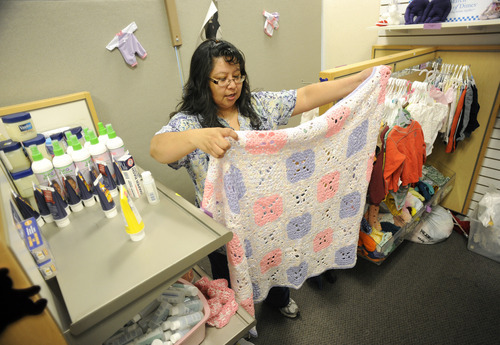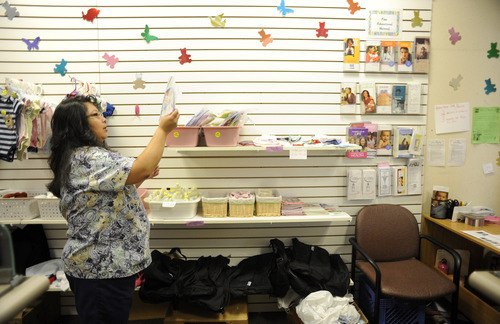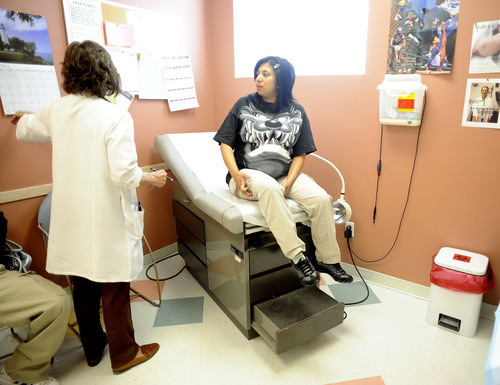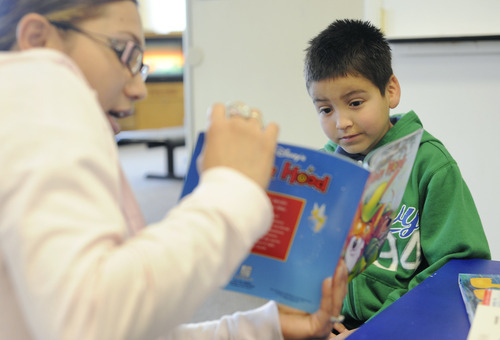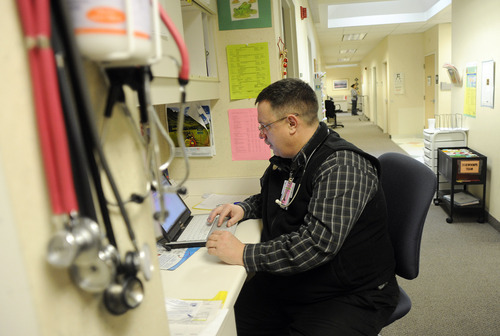This is an archived article that was published on sltrib.com in 2011, and information in the article may be outdated. It is provided only for personal research purposes and may not be reprinted.
Health clinics offering free and reduced-price medical care to Utah's poor and uninsured have been in growth mode.
Federal stimulus money and large private gifts — including $500,000 announced Tuesday by the GE Foundation — have fueled improvements, expansions and extended hours at many of the state's 11 federally qualified health centers. Even standalone operations that subsist on volunteer labor are financing remodels to meet growing patient loads.
But this could be the peak year for charitable clinics, which face an uncertain future.
"Health centers are asking, what is their future role? We're not here to compete, but to fill gaps in the health care system," and those gaps are changing if not narrowing, said Alan Pruhs, associate director of the Association for Utah Community Health.
Come 2014, most Americans will be required to have health coverage, which means fewer uninsured customers. About 60 percent of the 120,000 patients now served by Utah's health centers are uninsured.
Nearly all of them live at or below 200 percent of federal poverty, or $36,000 for a family of three, and will qualify for Medicaid or federal subsidies to purchase private health coverage on exchanges.
That's the idea if President Barack Obama's signature health overhaul withstands legal and political challenges. But cuts this year in federal and state funding are already forcing hard questions.
On hold are plans for five new health centers in Utah, said Pruhs, who suspects that money set aside for growth will be used to backfill the cuts.
In the future, Pruhs said, health centers expect to play a key role in easing strains on the nation's primary care providers, as previously uninsured Americans look for a medical home.
There's a shortage of primary care doctors and studies show people who have health coverage tend to use more health care, Pruhs said.
Lisa Nichols, director of the Midtown Community Health Center in Ogden, said in some rural areas, health centers are the only game in town.
They are adept at working with people who have language and transportation barriers, she said. And they take a holistic approach offering nutritional counseling and dental and behavioral care in addition to regular checkups.
"The gap may not be insurance status any more," Nichols said. "But for the underserved there will still be a problem of access."
In 2009, Utah's health centers received $13.4 million in federal funding and delivered $23.8 million in uncompensated care, which was written off as bad debt or plugged with state dollars and private contributions.
Cobbling together resources, most managed to serve swelling ranks of uninsured even during the recession.
Midtown recently opened a new facility in Davis County, added space in Ogden and is building a school-based clinic this month. The group's six sites care for 27,000 people, up from 18,000 three years ago, said Nichols.
Mountainlands Community Health Center, with locations in Payson and Provo, reached an additional 800 patients this year at a Saturday clinic paid for by federal stimulus dollars, said associate director Lori Wright.
"We're seeing new patients every day," Wright said. "But we only have a certain number of slots in each day's schedule so really sick people can't always be seen immediately. Some have to be referred to [emergency rooms]."
In Salt Lake County, though, the demand remains acute.
"We currently have a five-month waiting list for new patients, and there is no bottom to the need," said Jeanie Ashby, executive director of the non-federally subsidized Maliheh Free Clinic in Salt Lake City. "Last year we increased our operation from four days a week to five and I watched the waiting list dip for a couple of weeks and go right back up."
The clinic is raising money for a half-million-dollar renovation, which includes adding three exam rooms.
Four Salt Lake County clinics run by Community Health Centers Inc. (CHC) have had to stop taking new patients and are mostly limited to treating pregnant women and their children. A $500,000 grant from General Electric will help the clinics stay afloat, said Dexter Pearce, executive director of the 31-year-old nonprofit.
GE will also deploy engineers and computer technicians to help speed the clinic's workflow.
Pearce hopes health centers continue to enjoy bipartisan support. They doubled in scope under President George Bush, and Pearce feels more growth is needed considering that 4 percent of the population is predicted to remain uninsurable after 2014, such as the homeless and undocumented immigrants.
Said Ashby, "There will still be people who will fall through the cracks and need help. And we will be here to provide it, until everyone has access to health care."
kstewart@sltrib.comTwitter: @kirstendstewart —
How to help
Unlike federally subsidized health centers that charge patients a small co-payment, the Maliheh Free Clinic in Salt Lake City delivers care for free and runs on volunteer labor and private donations. Proceeds from a May 10 gala at the Calvin L. Rampton Salt Palace Convention Center featuring Nobel laureate and University of Utah professor Mario Capecchi will pay for its remodel.
For more information call 801-266-3700 or visit malihehfreeclinic.org.


